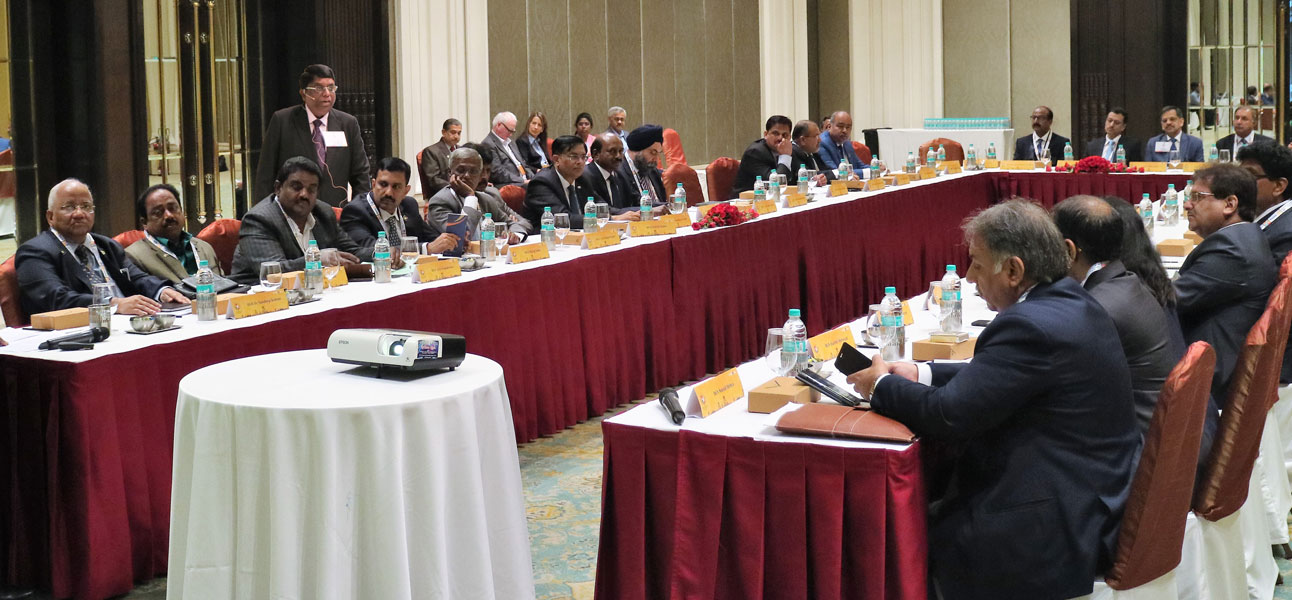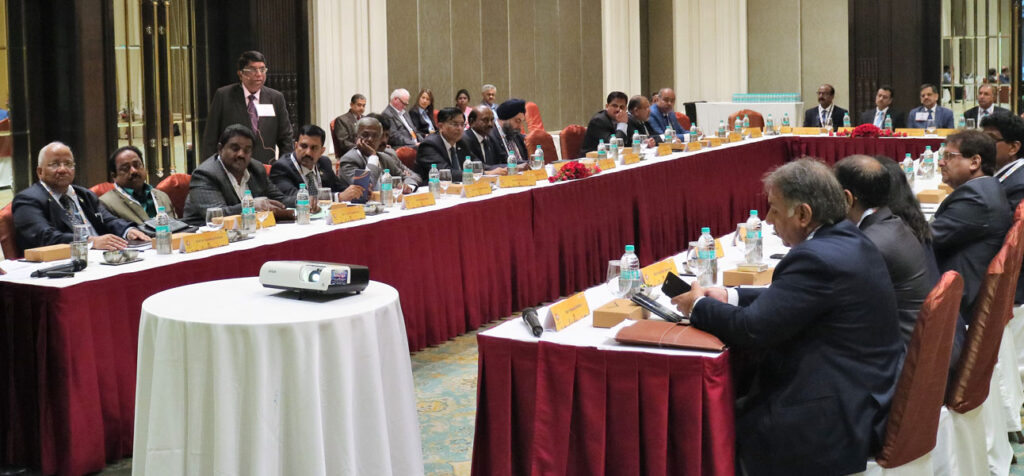
Sharpen the saw to learn new skills, align core competencies of your team for synergy, look for win-win situations in your clubs, and prioritise activities for better management,” advised RI Director C Basker to the 40 DG Nominees from Zones 4, 5 and 6A at the training seminar held in the run-up to the Chennai Zone Institute.
Listing out the dos and don’ts during their ‘waiting period’, he said that the governors are chosen two years ahead to give them sufficient incubation period during which “you can plan and set your goals by first observing the district projects, activities and understand the system.” As governors they unite people and win their confidence “to accomplish goals and in the process, your credibility will go up. But unless you prepare diligently, you cannot accomplish much,” he said.
Be proactive
Basker urged the DGNs to adopt a proactive attitude and “be the inspiration to carry the entire team and clubs with you by networking and leading your district with passion.” He cautioned them to be careful in selecting for their teams trustworthy members with proven track record in Rotary’s six focus areas. He suggested the DGNs bring out their district directory at least two months ahead of taking office.
In an interactive session on Strategic Planning, RIDE Bharat Pandya said only a vision accompanied by work will chart out their destiny. “We need to make our clubs vibrant with service activities and for that we must identify and plug their weaknesses.”
Rotary’s new vision
Referring to Rotary’s new vision statement: Together, we see a world where people unite and take action to create lasting change across the globe, in our community, and in ourselves, Pandya said, “We must have out-of-the-box and lateral thinking to increase and diversify membership by creating new channels effective from July 1, 2019.” He urged the future leaders to have regular brainstorming sessions to understand, analyse the strengths and weaknesses of their districts and revise their growth strategies accordingly.
Speaking on the Art of Training District Leaders, RIDE Kamal Sanghvi pointed out that continuous training is indispensable to keep the organisation competitive. Topic-based seminars (Foundation, membership) have their own dynamics, but it is role-based training sessions — PETS, GETS, DTTS and DTA — that merit closer scrutiny as they are involved in shaping Rotary leaders.
“The more you practise, the more confident you become. Here, the facilitators and trainers play a key role in encouraging club participation, building consensus from diverse views, sustaining high-energy levels among members, and act as catalysts to project a good Rotary image in the community,” he said.
Speaking on TRF giving, PRID Mike Webb, Chair of TRF’s Finance Committee, highlighted the fact that the Foundation’s net assets rose to $1.127 billion in June this year from $1.058 billion in June 2017. He recalled TRF’s vision to create a grand endowment fund of $2.025 billion by 2025 and to realise this objective, he called upon Rotary clubs to contribute generously to the Foundation.
Addressing stewardship issues, TRF Trustee Gulam Vahanvaty warned that because of “a miniscule number of individuals, out of 1.4 lakh Rotarians in India, indulging in shenanigans, we are earning a bad name.” He added that Rotary funds should be used in a responsible and transparent manner with good governance and maintenance system.
While India ranked number two in TRF giving, second only to the US, there was a “big gap between the top two ranks which should be closed.” Rotary had received $373 million as TRF contributions in 2017–18 and has set a goal of netting $380 million in this Rotary year, and this includes the Polio Fund of $150 million (including Gates Foundation’s 1:2 grant); Annual Fund of $137 million; Endowment Fund of $61.5 million; and global grants and outright gifts of $31.5 million. “Unlike in the days of matching grant projects where one or two Rotarians were involved in their implementation, we have ensured the involvement of the whole club for better fiscal management and community benefits as part of best practices,” said Vahanvaty.
Women in Rotary
PDG Raewyn Kirkman, D 9930, from New Zealand, suggested that clubs must show flexibility on issues such as attendance, meeting schedules and membership cost to attract women members. “Make them feel comfortable in Rotary club meetings by extending a friendly platform to them to share their ideas and network with their peer groups.” South Asia zones (4, 5 and 6A) with 10.19 per cent of women membership compared to RI’s 22 per cent (in NZ it is 25 per cent) have to do much groundwork to remedy their skewed gender ratio, she noted.
Earlier, D 3232 PDG J B Kamdar, in his presentation on ‘Data collection and processing’, said 66 per cent of Rotarians exit in the first two years of their membership, hence “mentoring and hand-holding are critical for retention.” With charts, he showed that Zone 4 had a maximum of 107 per cent growth in the last five years, followed by Zone 5 with 78 per cent and Zone 6A had the least growth at 24 per cent. The growth in the last Rotary year has slowed down considerably across the zones, he noted.
RID Eun-soo Moon in his presentation on Rotary in Korea said the weekly club meetings were made interesting for youngsters with expert speakers invited to share their knowledge. “During my tenure as Governor of D 3620, I converted my office into a project monitoring room which yielded results by creating a record number of new clubs, additional members and more funds for TRF,” he said.
Zone 5 EMGA Sam Patibandla urged the DGNs to devise a strategy to identify struggling clubs in their districts. “Form a district leadership team with feedback from PDGs, the IPDG and club presidents. Ensure that your clubs are registered at My Rotary and their leadership plans are uploaded at Club Central for sharing.”
Seminar Chairman R Theenachandran said membership retention, which is below 70 per cent in South Asia, is important. Unlike earlier, when the DGN period was regarded as “honeymoon years”, the scenario has changed now as “Rotary is expecting a lot from you and “you have to live up to the exacting demands with planning and strategic vision,” he said.
Picture by K Vishwanathan






